Kinetic Glasshouse: Giant Flower Buds Terrarium to Protect Rare Plant Species
Kinetic Glasshouse is an open structure as a "house" to rare plants in the Woolbeding Garden. In the historic district of West Sussex, England, Heatherwick Studio designed a kinetic Glasshouse in collaboration with the National Trust charitable organization.
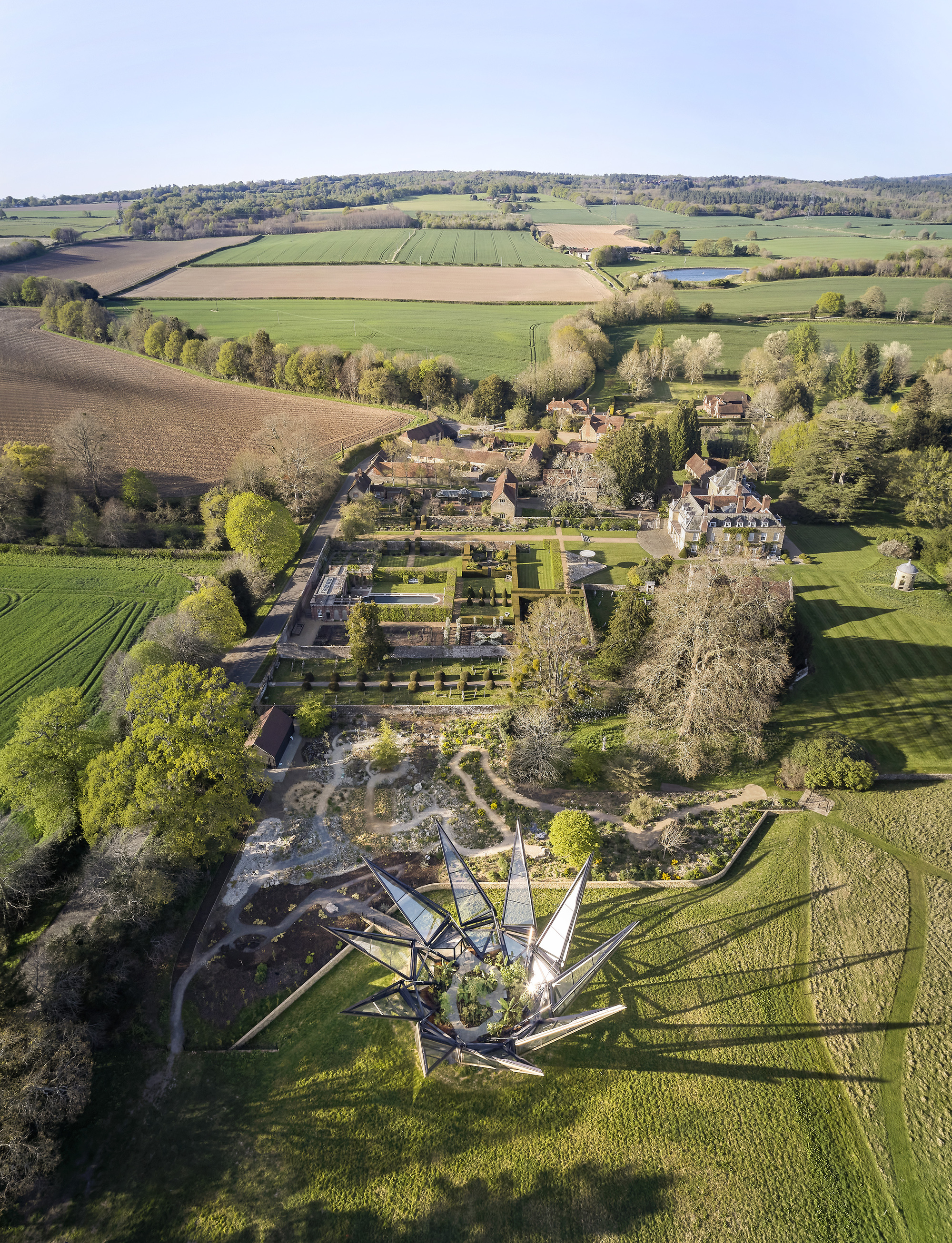 (Kinetic Glasshouse designed by Heatherwick Studio)
(Kinetic Glasshouse designed by Heatherwick Studio)
Designing this Greenhouse began with Thomas Heatherwick's interest in the terrarium. In the past, a terrarium was used by the Victorians as a container to bring crops to Europe. You need to know that a terrarium is a glass container that resembles an aquarium but contains plants. Delving into the shape of the terrarium, Heatherwick Studio takes this concept based on this small plant glass container's quality, freshness, detail, and decorative elements. As a result, Kinetic Glasshouse features a greenhouse design with a visual shape that resembles a terrarium.
However, in designing the Kinetic Glasshouse, Heatherwick Studio didn't necessarily borrow the shape from the terrarium; instead, they explored it until a futurist greenhouse was made.
 (Kinetic Glasshouse is shaped to resemble a large-scale terrarium)
(Kinetic Glasshouse is shaped to resemble a large-scale terrarium)
Then, Heatherwick Studio designed ten steel and glass components representing "sepals" – leaves protecting the growing flower buds. Kinetic Glasshouse features a 141-square-meter space that houses a rare subtropical plant, Aralia Vietnamensis – the only plant in the Woolbeding Garden that is highly protected.
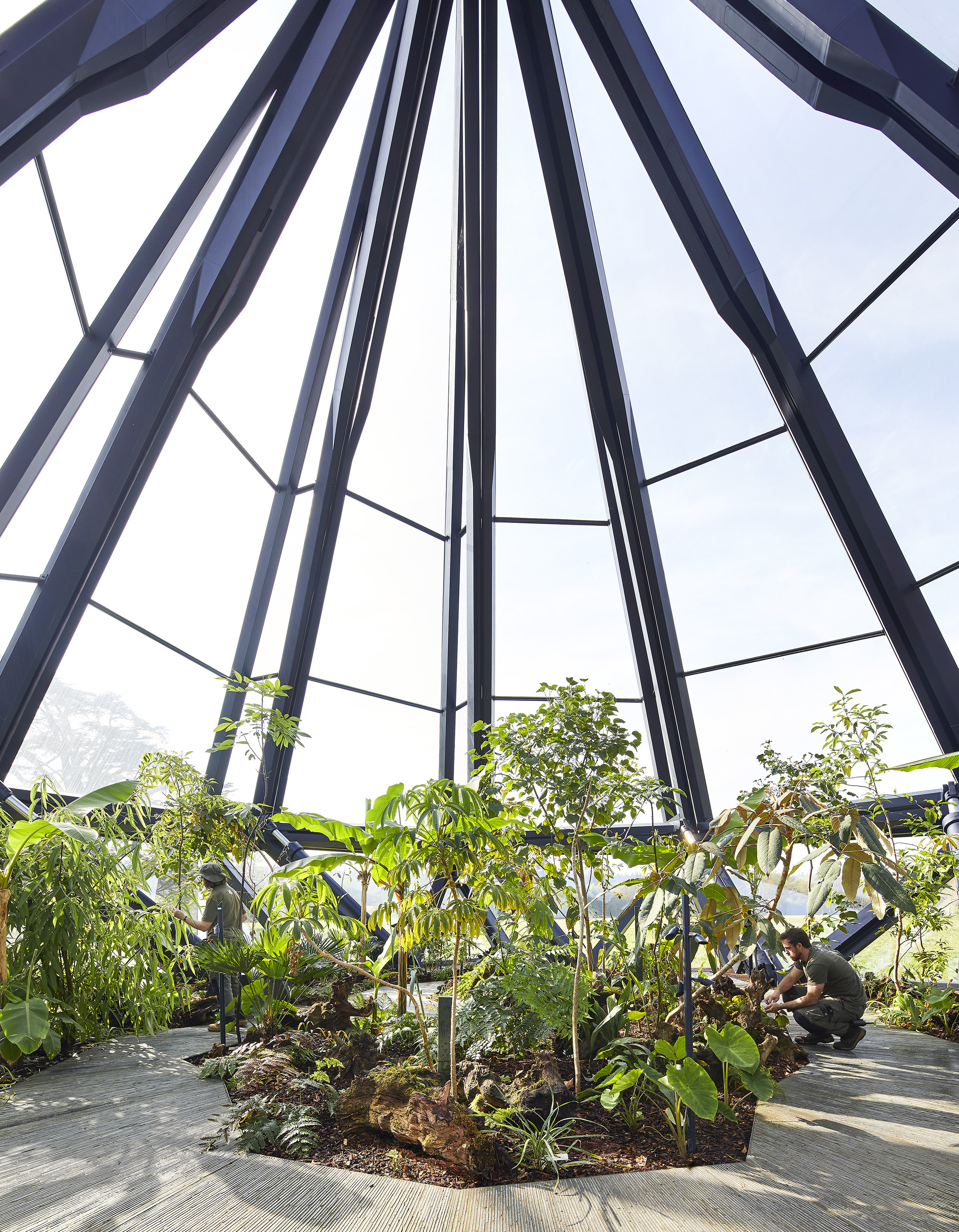 (Kinetic Glasshouse is used to protect a rare plant, Aralia Vietnamensis)
(Kinetic Glasshouse is used to protect a rare plant, Aralia Vietnamensis)
Heatherwick Studio programs Kinetic Glasshouse to be able to open and close automatically on ten sides of its buds. This program aims to maximize protection for subtropical plants vulnerable to cold weather. This open-close program refers to the process of movement of flowers that begin to bloom, opening their petals to create an ample open space inside the Greenhouse.
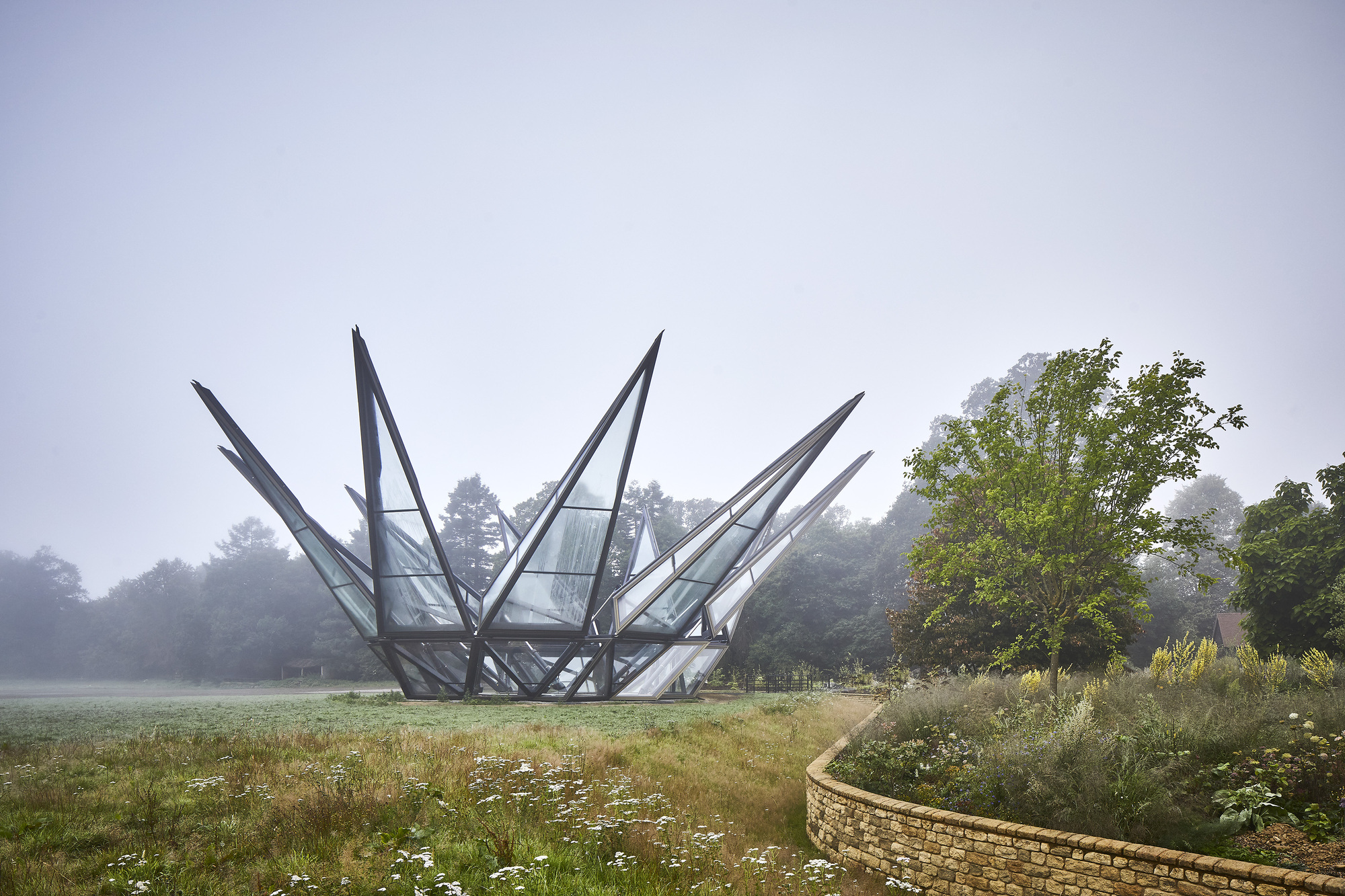 (When viewed from the side, Kinetic Glasshouse looks like a sparkling princess crown)
(When viewed from the side, Kinetic Glasshouse looks like a sparkling princess crown)
When spring, Kinetic Glasshouse opens its "sepals" programmed in a system of hydraulic mechanisms to allow plants to freely get sunlight and natural air. Meanwhile, during winter, the structure will remain closed to protect subtropic climate plants that want warm temperatures.
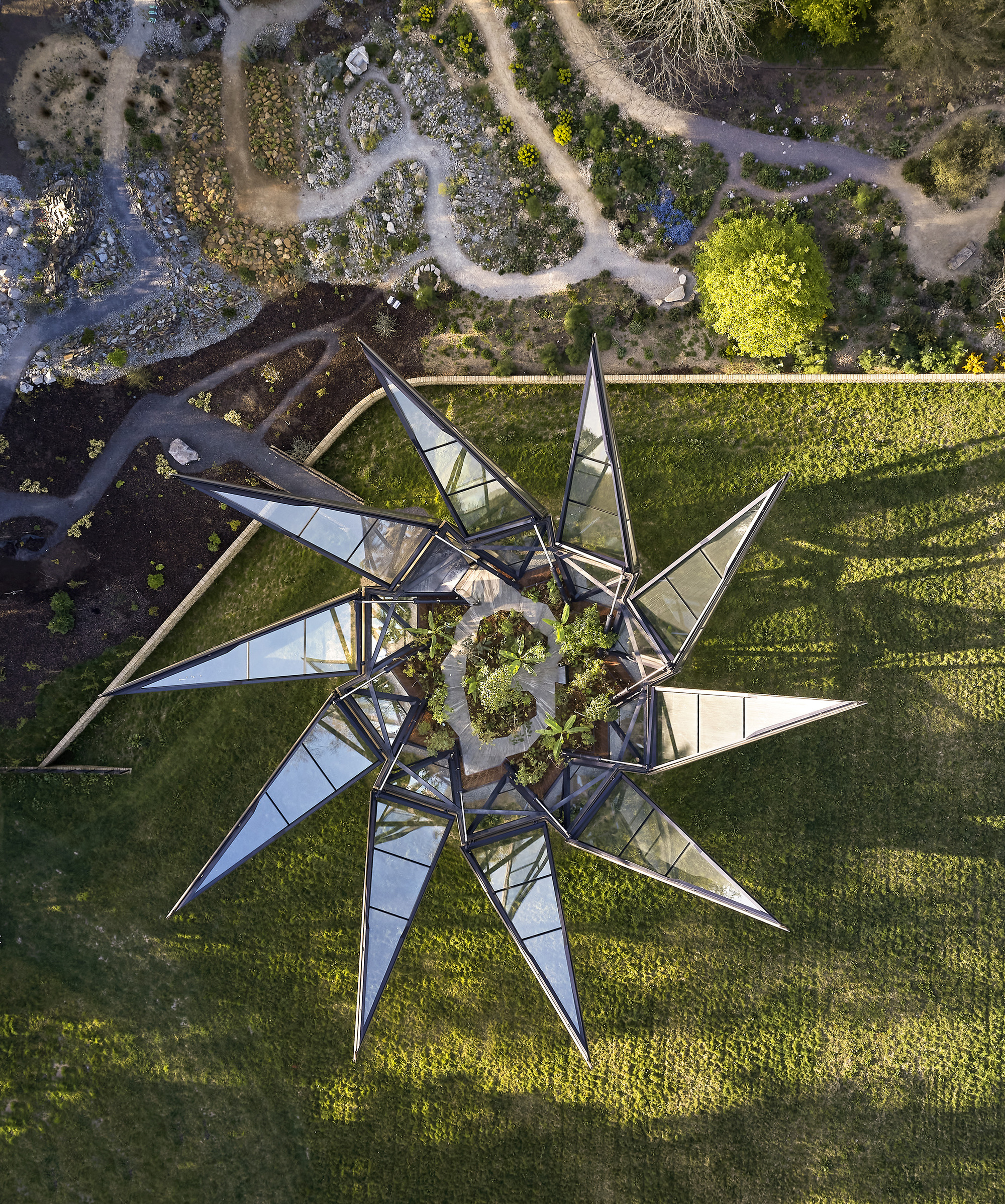 (When it opens and is viewed from above Kinetic Glasshouse looks like a blooming flower)
(When it opens and is viewed from above Kinetic Glasshouse looks like a blooming flower)
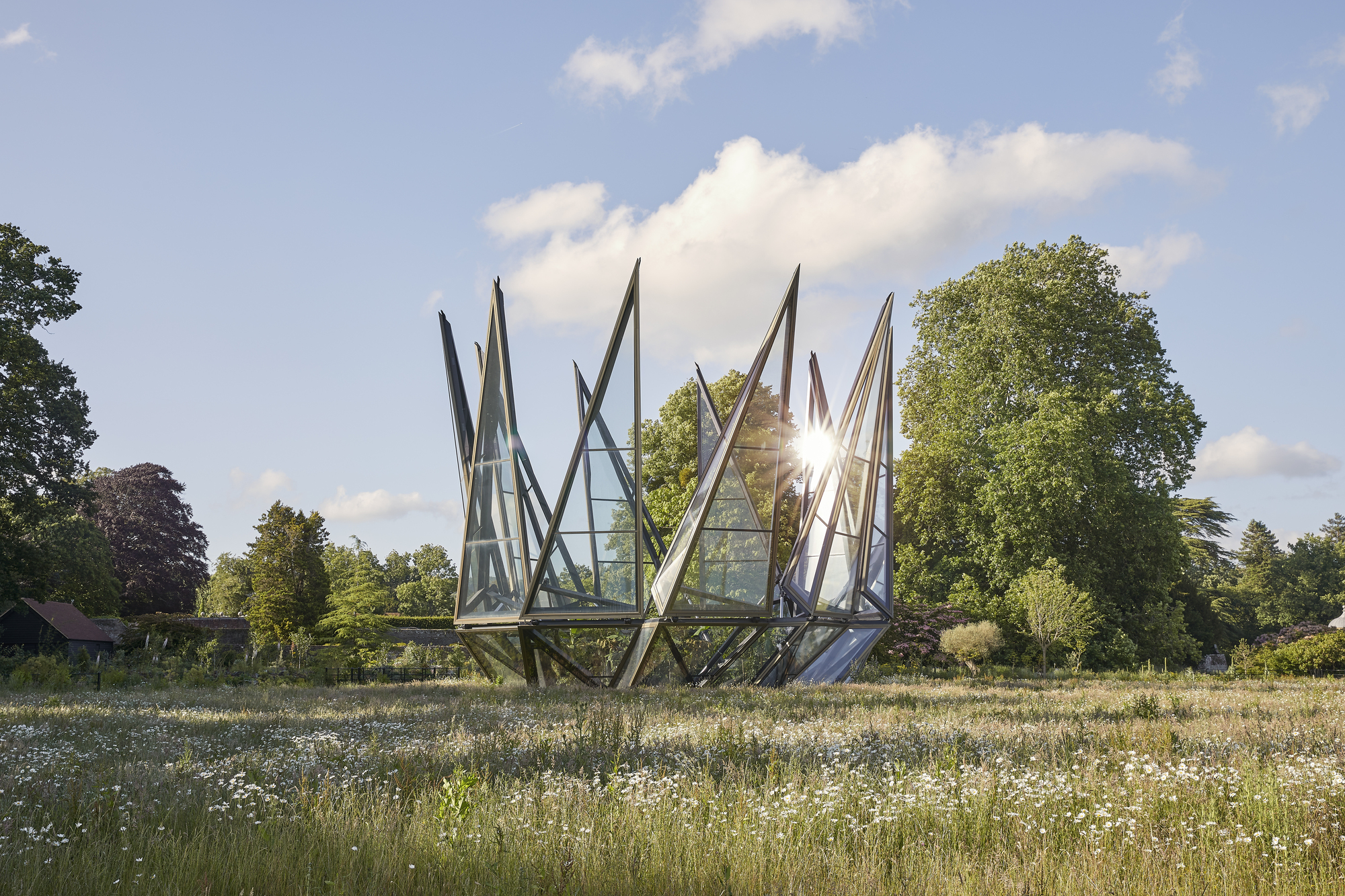 (Kinetic Glasshouse is programmed to be able to open and close automatically)
(Kinetic Glasshouse is programmed to be able to open and close automatically)
Kinetic Glasshouse builds inside the "Silk Route Garden" site, highlighting the ancient trade routes between Asia and Europe, which made this area have many species of plants due to the influence of trade routes.
"This is a place and a project that has come to light. You step through this exquisite garden and find an object that starts like a jewel and ends like a crown, as the Greenhouse slowly unfolds." Said Thomas Heatherwick, the leader of the Heatherwick studio.
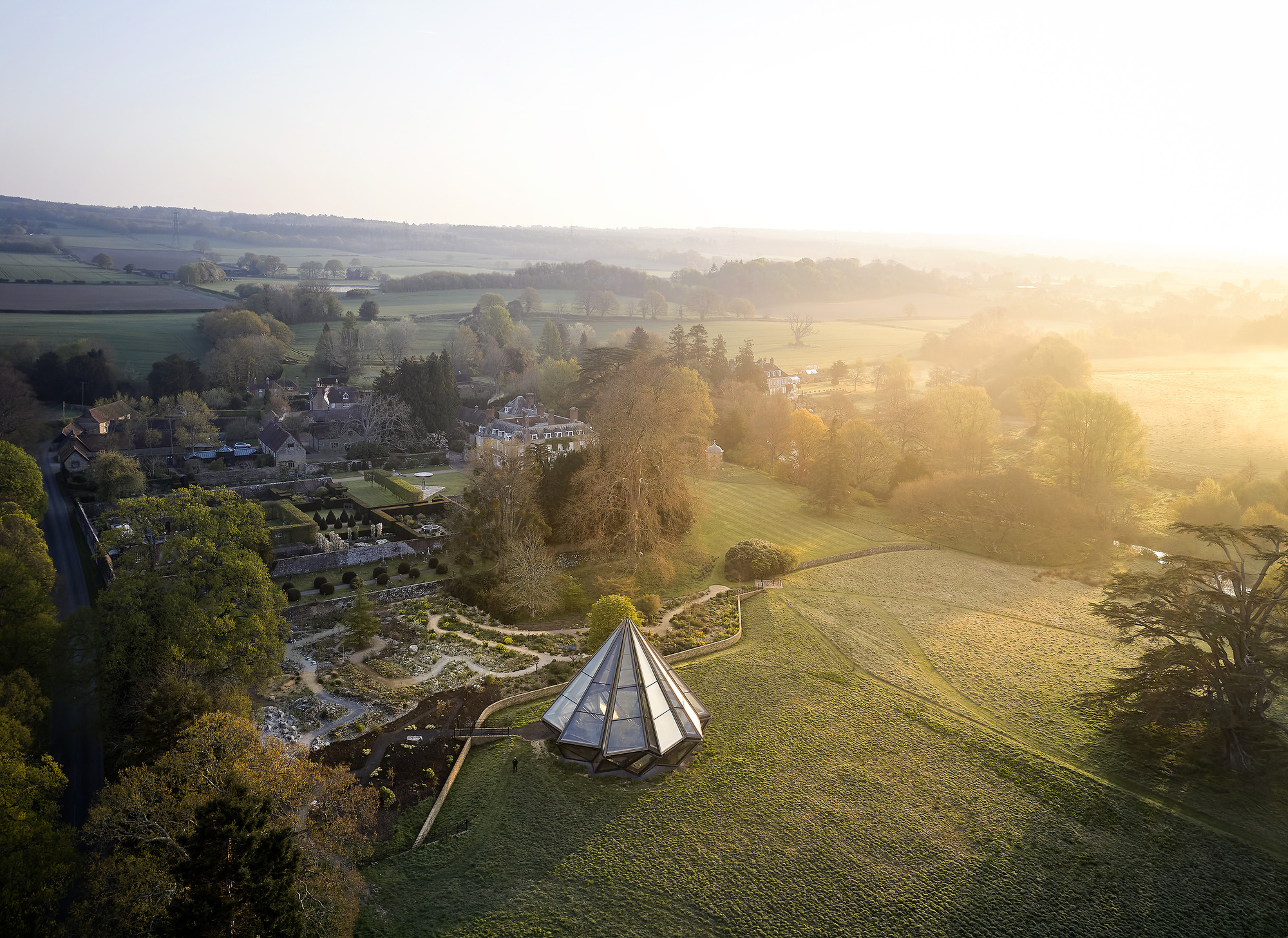 (Kinetic Glasshouse built inside the "Silk Route Garden")
(Kinetic Glasshouse built inside the "Silk Route Garden")




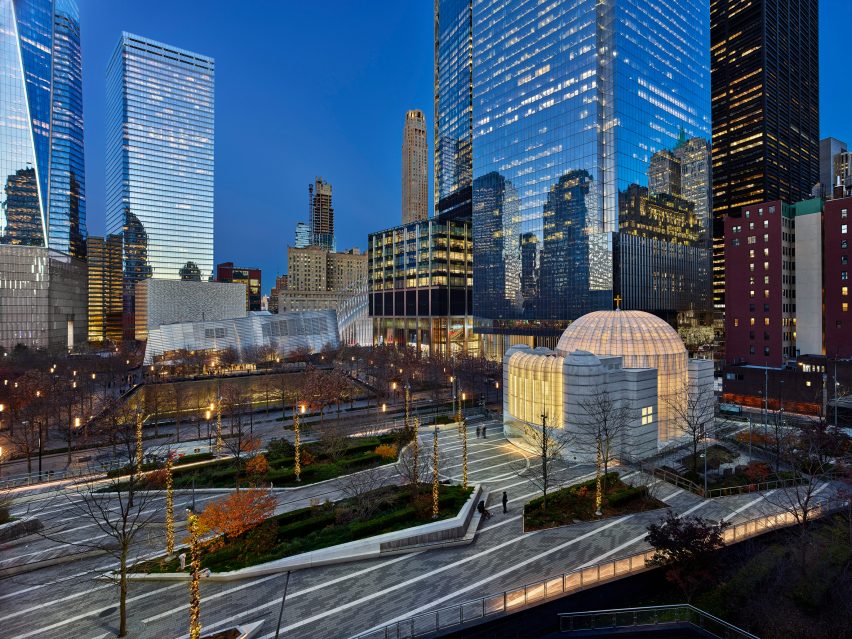


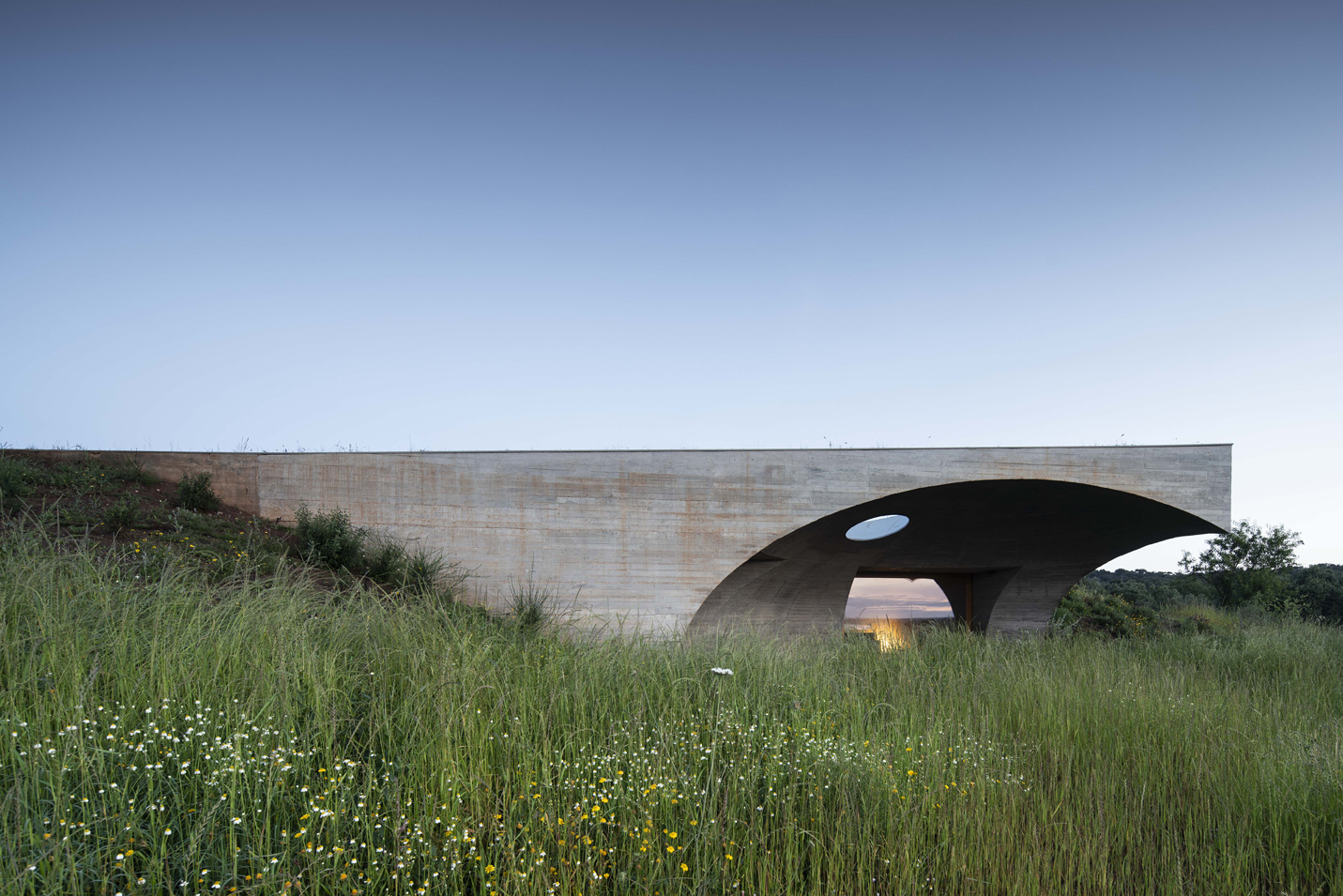


Authentication required
You must log in to post a comment.
Log in